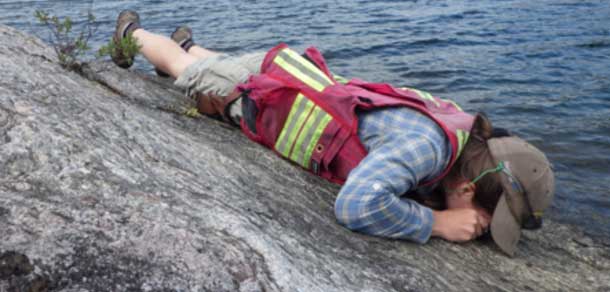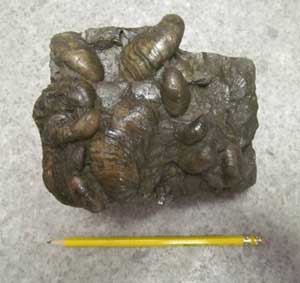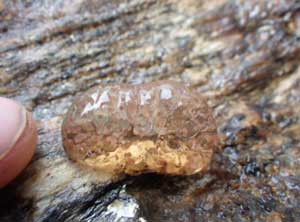Anyone who spends a minute talking to a geoscientist learns that almost all of them have a beloved rock collection. In this regular section of The Professional Edge, we learn about geoscientists and their profession through their favourite rocks. In this issue, we talk with Samantha Van De Kerckhove, Geoscientist-in-Training, a Precambrian Research Geologist at Saskatchewan Geological Survey.
Sillimanite City
Sillimanite City is the fanciful name given to an outcrop that I mapped on the shoreline of Robertson Lake in northern Saskatchewan, approximately 35 kilometres west of the Seabee Gold Operation and 100 kilometres northeast of La Ronge. The outcrop was discovered during my 2018 bedrock mapping field season.
This outcrop is notable because of its atypical mineral assemblage and mineral replacement textures. It’s composed of the minerals quartz, potassium feldspar, plagioclase, biotite, sillimanite, garnet, cordierite, magnetite and muscovite, listed in order of decreasing abundance.
Cordierite (blue) and garnet (red) clusters within a quartz-rich portion (white) of the outcrop.
The significant amount of sillimanite in this outcrop gives the rock a fibrous, almost furry-looking texture when broken.
Both sillimanite and garnet are metamorphic minerals, which means they formed in solid state in the Earth’s crust, under high pressure and temperature. Garnet overgrowing sillimanite implies multiple phases of metamorphism and/or metasomatism, which is the chemical alteration of a rock by fluids. There are also aggregates of garnet and magnetite up to three centimetres in size across the outcrop, which is uncommon in this area. Coarse cordierite, a metamorphic mineral that is uncommon in this area, is found within the quartz-rich portions of the outcrop.
Located within a 1.8 billion-year-old mountain belt, this rock has been subject to a complex geological history. It is also located along an approximately 250-kilometre-long fault, the Stanly Shear Zone. Fluids moving along this shear zone likely altered this rock, accounting for the atypical assemblage of minerals. Attempting to determine exactly what type of rock Sillimanite City was prior to metamorphism and alteration is a conundrum which has yet to be solved, and thus, it continues to hold my fascination.
One of the many reasons I enjoy being a field geologist is the constant exposure to the extensive flora and fauna of Saskatchewan’s north.
In this respect, Sillimanite City is once again memorable because, at this location, my assistants and I discovered a new-to-us biological phenomenon: a small, two-centimetre long, transparent gelatinous blob with pink spots attached to a rock under the waterline. My best guess is that this was the egg sack of a water spider who was hanging out nearby, but I’d love to hear from anyone who knows what it is.
Gelatinous underwater egg sack (I think), possibly belonging to one of the water spiders who live in the lakes of northern Saskatchewan.


